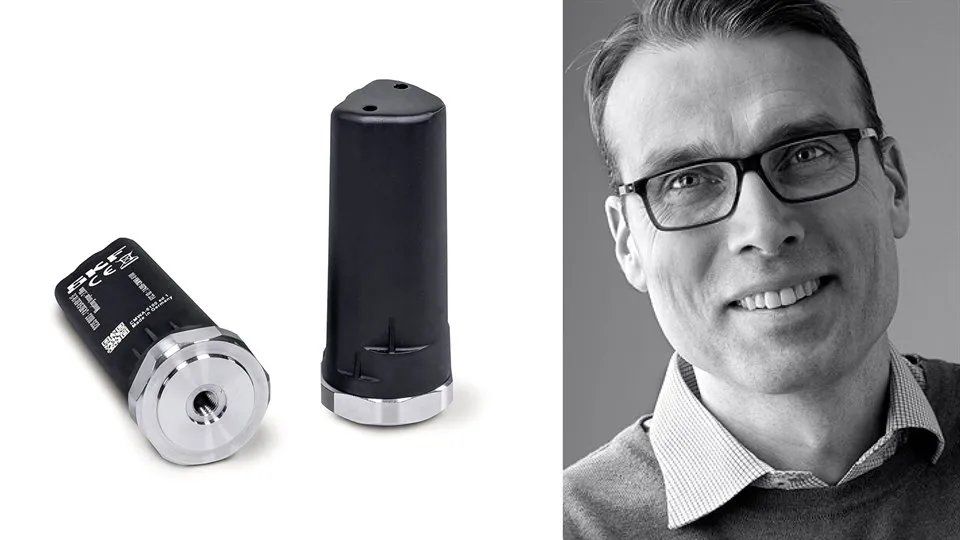Researchers evaluated wireless IoT technology in scientific study
In collaboration with the company LumenRadio in Gothenburg, researcher Dr. Luca Beltramelli at Mid Sweden University conducted a scientific study comparing performance between leading wireless IoT solutions on the market.
- To go down in detail on technology has been an interesting eye opener for us. The collaboration with the researchers has been easy and it is luxurious to talk to someone who really understands our technology. We get to know relevant research, learn more and get an overview of what is happening in the field of technology, says Peter Lindkvist, Sales Manager at LumenRadio.
"The collaboration with the researchers has been easy and it is luxurious to talk to someone who really understands our technology"
LumenRadio develops robust wireless technology for business-critical applications and is based in Gothenburg. LumenRadio has collaborated with Mid Sweden University and Prof. Mikael Gidlund’s research team at STC Research Centre for several years. So when Peter Lindkvist received a request from one of his customers about the difference between LumenRadios MiraMesh and the well-established solution SmartMesh IP from Analog Devices, Peter turned to Mikael and asked if this was something that Mid Sweden University could help with?
- When LumenRadio got in touch, it was obvious to help as they are one of our most important partners in the industry. In addition, it shows that the company highly values the research group’s specialist knowledge of wireless mesh networks. The assignment went to our postdoc, Dr. Luca Beltramelli, who was involved in designing the tests, carried out the implementation and evaluation. What is fun about these assignments is that they often give new insights and research challenges, says Professor Mikael Gidlund at Mid Sweden University.
The end customer set the framework for the test
The two mesh products are currently used in WirelessHART, which is the leading standard for wireless communication in process automation, and in industrial condition monitoring. They have many similarities; both are multi-jumping networks with the technology needed to realise IIoT and Industry 4.0. Both work well for industrial solutions as they are very robust and have low power consumption.
Luca chose to conduct a comparative study between the two products based on predefined test cases.
- It was our customer who set the frames for the test such as the size of the network, where the test would be conducted and the actual scenario of the test. And also, how often the sensors would report data, if there were to be one-way or two-way communication and the size of the data packages, says Peter Lindkvist, LumenRadio.
Both mesh products were tested in the same environment with as comparable conditions as possible and this was tested:
- Reliability
How many data packages arrive/disappear and how many retransmissions are required for the package to arrive. - Power consumption
Retransmission of data packets requires more power from the battery-powered, wireless sensors — in addition, a lighter protocol is more energy efficient. - Latency
Measure how long it takes for each data packet to arrive. Retransmissions create delays and a slower system.
The test contained 15 sensors and 1 gateway and was conducted at Mid Sweden University in Sundsvall in an office environment. This situation is similar in many ways to a commercial building where the mesh technology is currently used for building automation, for example.
The results were surprising
The results of the tests showed that the competitor SmartMesh IP was very robust and had almost a delivery guarantee on its data. But this delivery guarantee is at the expense of both power consumption and latency. More retransmissions take a little longer and require more energy, but the likelihood of data packages arriving is increasing. LumenRadio’s MiraMesh product was less aggressive in the retransmission of the data packages, but the results indicate that MiraMesh has a higher reliability of the so-called link layer — when measures package-by-packages. The higher reliability of MiraMesh is achieved by adaptive frequency jumping and changing channel in real time.
The results showed that our product works a little smarter, although at first glance it does not seem quite as robust. However, our product MiraMesh proved to have significantly lower energy consumption — which can be “switched in” for increased robustness by making more retransmissions, says Peter.
- When the result was presented to our customer, they were pleasantly surprised, MiraMesh kept exactly what we promised. Moreover, the fact that it was a university, which is a neutral party, that carried out a scientific test of the products was very valuable and created a high degree of credibility. The collaboration with Mid Sweden University has been very simple and we are super satisfied with Luca who is very competent and curious, which has made the cooperation work well," Peter concludes.
Here you can read the research article/report:
"Comparative performance evaluation of MiraMesh and SmartMesh IP"
Contact



